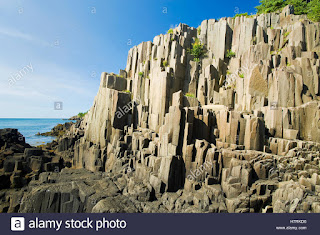Achieving the Paris Agreement goals of keeping global warming to “well below” 2C, or to 1.5C, above pre-industrial levels will require rapid decarbonisation of human society.
But national commitments to rein in greenhouse gas emissions are currently insufficient to meet these agreed limits. It is increasingly likely that “negative emissions”, or “carbon dioxide removal”, technologies will be needed to take up the slack.
These techniques involve extracting CO2 from the atmosphere and storing it indefinitely. Scientists have proposed a range of different approaches and we now need realistic assessment of these strategies, what they might be able to deliver, and what the challenges are.
In a new paper for Nature Plants, we tackle an under-discussed technique of CO2 removal called “enhanced rock weathering”. Our research highlights the potential wider benefits for crop yields and soil health, and sets out a research agenda for the next steps.
What is enhanced weathering?
As you might remember from geography classes at school, chemical weathering is a natural process that continuously erodes away rocks in our landscapes and sequesters atmospheric CO2 over millions of years.
The process begins with rain, which is usually slightly acidic having absorbed CO2 from the atmosphere on its journey to the ground. The acidic rain reacts with the rocks and soils it lands on, gradually breaking them down into minute rock grains and forming bicarbonate in the process. Eventually, this bicarbonate washes into the oceans, where the carbon is stored in dissolve form for hundreds of thousands of years or locked up on the sea floor.
Enhanced weathering scales up this process. It involves pulverizing silicate rocks such as basalt – left over from ancient volcanic eruptions – to bypass the slow weathering action. The resulting powder, with a high reactive surface area, is then spread on large areas of agricultural land where plant roots and microbes in the soil speed up the chemical reactions.
As natural rock weathering absorbs around 3% of global fossil fuel emissions, enhanced weathering can provide a boost to remove even more CO2 from our atmosphere.
But the potential benefits do not end there. As enhanced weathering makes water more alkaline, it can help counteract ocean acidification.
And adding minerals to soils can boost nutrient levels, improving crop yields and helping restore degraded agricultural soils.
Food demand
The need to cut CO2 emissions is unfolding alongside an unprecedented increase in food demand – linked to dietary changes and a growing population that may surpass 11 billion by 2100 (pdf). At the same time, farming itself a growing contributor to climate change.
Critically, enhanced rock weathering works together with existing managed croplands. Unlike other negative emissions techniques under consideration, it doesn’t compete for land used to grow food or increase the demand for freshwater.
Read more at How ‘Enhanced Weathering’ Could Slow Climate Change and Boost Crop Yields

No comments:
Post a Comment